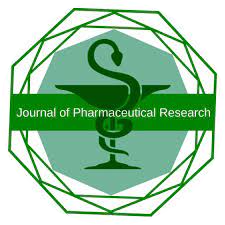


Journal of Pharmaceutical Research
Year: 2025, Volume: 24, Issue: 3, Pages: 150–160
Review Article
Ragni Kumari1,∗
1Assistant Professor, Department of Optometry, UPUMS, Saifai, Etawaha, U.P., India
*Corresponding Author
Email: ragnimishraa@gmail.com
Diabetic retinopathy (DR) is a leading cause of preventable blindness worldwide, emphasizing the importance of early detection through effective screening methods. The diagnostic accuracy of various DR screening techniques, including direct ophthalmoscopy, retinal photography, and telemedicine, remains a critical factor in improving clinical outcomes. This review aims to evaluate and compare the sensitivity, specificity, and overall diagnostic performance of different DR screening methods. Objective of the study is to assess the diagnostic accuracy of DR screening methods, including retinal photography, telemedicine, direct ophthalmoscopy, and other emerging technologies. A comprehensive literature search was conducted across databases including PubMed, Scopus, and Google Scholar up to May 2025. Studies involving adult diabetic populations and evaluating screening methods such as direct ophthalmoscopy, retinal photography, slit-lamp examination, and tele-retinal screening were included. Data on sensitivity, specificity, and other diagnostic metrics were extracted by an independent reviewer. The quality of included studies was assessed using the QUADAS-2 tool. Due to heterogeneity among studies, a narrative synthesis was performed without meta-analysis. Various screening methods showed differing diagnostic accuracies influenced by technology, examiner expertise, and population characteristics. Retinal photography, especially with mydriasis, demonstrated higher sensitivity and specificity compared to direct ophthalmoscopy. Tele-retinal screening showed promise in improving access in remote cohorts. However, variability in study designs and outcome reporting limited direct comparison. This review highlights that retinal photography, particularly when combined with telemedicine, offers the most reliable screening method for DR in terms of diagnostic accuracy. However, emerging technologies such as AI-based systems may improve detection rates in the future. Further high-quality, large-scale studies are needed to validate these findings and optimize screening protocols, especially in resource-limited settings.
Keywords: Diabetic retinopathy, Screening, Diagnostic accuracy, Retinal photography, Telemedicine
© 2025 Published by Krupanidhi College of Pharmacy. This is an open-access article under the CC BY-NC-ND license (https://creativecommons.org/licenses/by-nc-nd/4.0/)
Subscribe now for latest articles and news.